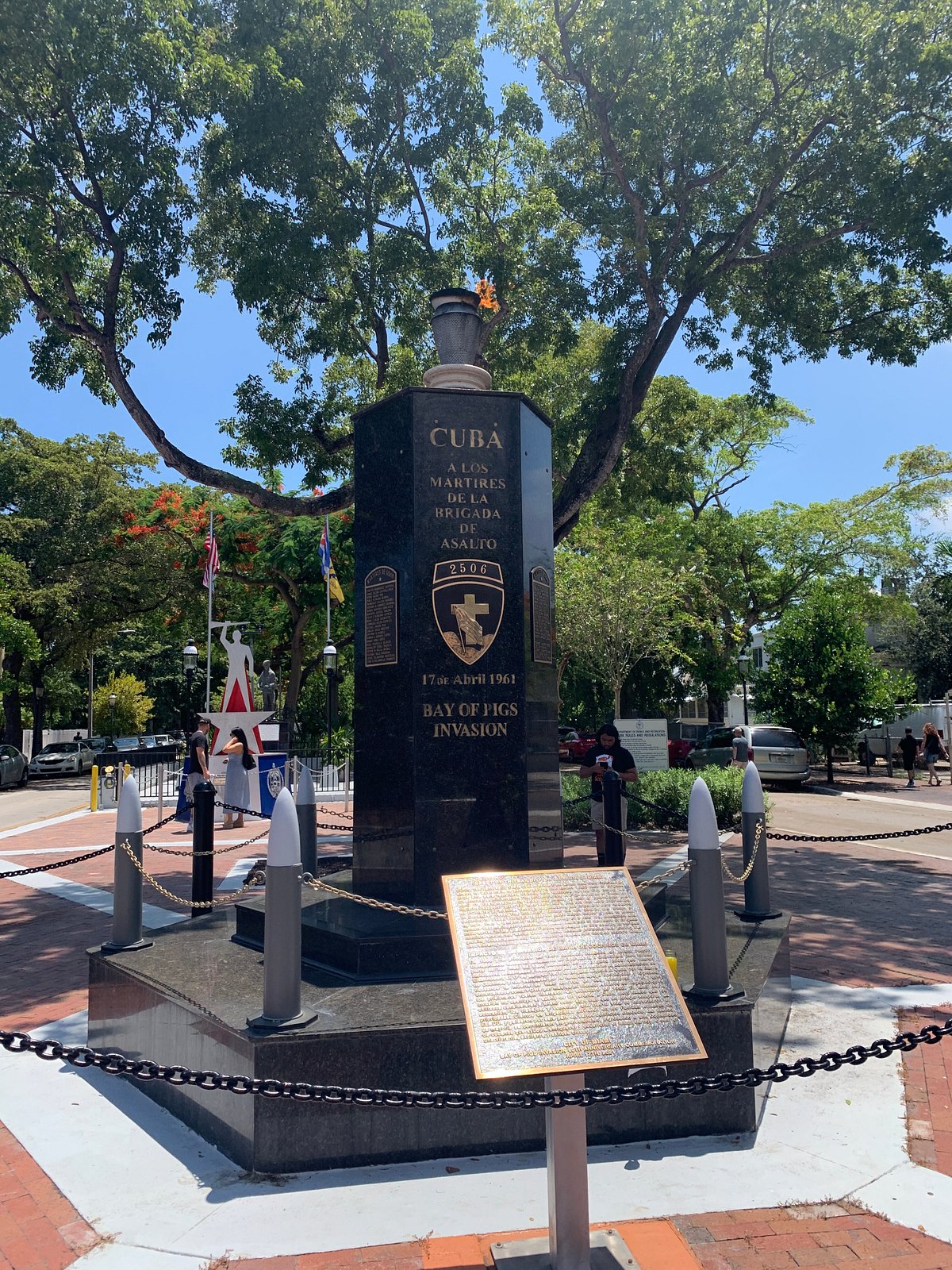The Bay of Pigs Monolith: a Deep Study Its Historic Importance and Legacy
The Bay of Pigs Monument stands as a quiet sentinel to a zero hour in history, symbolizing the elaborate web of political decisions, worldwide relations, and human lives that intersected at that tumultuous time. Its visibility evokes a complex tapestry of occasions that continue to reverberate today, triggering reflections on the nature of power, ideological background, and the withstanding legacy of problem. As we stand before this monolith, it beckons us to peel off back the layers of its historical value and consider the extensive effect it has carried shaping the globe as we understand it.
Historical Context of the Bay of Pigs
The Bay of Pigs intrusion, an essential event in Cold Battle history, took place on April 17, 1961, as an unsuccessful effort by Cuban exiles to overthrow Fidel Castro's program with support from the United States. The invasion was prepared during the Eisenhower administration but was implemented under President John F. Kennedy. The operation intended to establish a counter-revolutionary federal government in Cuba and stop the spread of communism in the Western Hemisphere. Nonetheless, as a result of a collection of tactical mistakes, the goal finished in disaster within just three days.
The historical context of the Bay of Pigs intrusion is deeply rooted in the ideological tensions in between the USA and the Soviet Union. Cuba, under Castro's policy, had straightened itself with the Soviet Union, positioning a regarded risk to American passions in the region. The failing of the invasion not just sealed Castro's hold on power however likewise stretched relations in between both superpowers, escalating the Cold War to new heights of hostility and uncertainty.
Relevance of the Monolith
Amidst the consequences of the fallen short Bay of Pigs intrusion, the creation of the Bay of Pigs Monolith stands as an emotional reminder of the historical significance and enduring legacy of this pivotal event in Cold War history - Bay of Pigs Monument map. The monument acts as a sign of remembrance, honoring the lives lost and sacrifices made throughout the intrusion. It stands as a testament to the guts and dedication of those included in the procedure, highlighting the intricacies and obstacles of Cold War national politics
Additionally, the Bay of Pigs Monument holds instructional value, offering future generations with a tangible representation of a critical moment in history. By memorializing the invasion, the monolith triggers reflection on the consequences of failed military interventions and the significance of calculated decision-making in worldwide events.
In addition, the monument works as a caution against overreach and the dangers of unchecked political passions. It stands as a sad reminder of the threats and consequences of hasty army activities, urging care and prudence in diplomacy undertakings. The Bay of Pigs Monument, therefore, plays a critical function in preserving the memory of the intrusion and its lessons for posterity.
Influence On Cold Battle Relations
Just How did the Bay of Pigs intrusion influence Cold Battle relations between the involved nations? The Bay of Pigs invasion had considerable consequences on Cold War connections. The Bay of Pigs invasion served as a plain tip of the prospective repercussions of proxy battles and hidden procedures throughout the Cold Battle age, stressing the demand for both sides to work out care and diplomacy in their communications to protect against further escalation of hostilities.
Conflicts Bordering the Monolith
Amongst the different arguments bordering the Bay of Pigs Monument, one bottom line of contention focuses on its historic accuracy and representation of occasions. Movie critics argue that the monolith might present a overly simplified or prejudiced view of the Bay of Pigs intrusion, potentially playing down complicated nuances and historic context. Some viewers and scholars suggest that the monument's story could be perceived as glorifying or misshaping certain facets of the event, consequently influencing public understanding and memory of the historic event.

Contemporary Significance and Reflection

In modern society, the Bay of Pigs Monument offers as a sign of political tensions, Cold Battle battles, and the repercussions of failed army treatments. Its presence prompts representation on the function of celebratory frameworks fit public memory and influencing perceptions of nationwide identity. Furthermore, the ongoing conflicts surrounding the monument emphasize the significance of revisiting historic narratives, reflecting on point of views, and participating in crucial discussion concerning the complexities of previous occasions.
As arguments persist, the Bay of Pigs Monument remains a centerpiece for discussions on memory, background, and the withstanding legacy of substantial moments in international politics.
Verdict
To conclude, the Bay of Pigs monolith stands as a considerable reminder of the stopped working intrusion and its impact on Cold Battle relationships. In spite of conflicts surrounding its building and construction, the monolith remains to hold historical significance and importance in modern times. Its existence functions as a representation of the occasions that took place throughout the Cold War age, highlighting the intricacies of international connections and the repercussions of political choices.
Amidst the after-effects of the fallen short Bay of Pigs invasion, the creation of the Bay of Pigs Monument stands as a touching suggestion of the historical importance and withstanding heritage of this crucial event in Cold War history. Bay of Pigs Monument photos.Amongst the numerous discussions surrounding the Bay of Pigs Monument, one key point of contention revolves Full Article around its historical accuracy and portrayal of events. Movie critics suggest that the monolith might provide a discriminatory or extremely simplified sight of the Bay of Pigs intrusion, possibly glossing over complex nuances and historical context. Generally, the controversies surrounding the Bay of Pigs Monument highlight the complexities of commemorating historic occasions and the value of critically reviewing depictions of the past
In verdict, the Bay of Pigs monolith stands as a substantial suggestion of the fallen short intrusion and its influence on Cold War connections.
Please visit one of our local supporters - Miami Pool Service Pros Swimming Pool Service